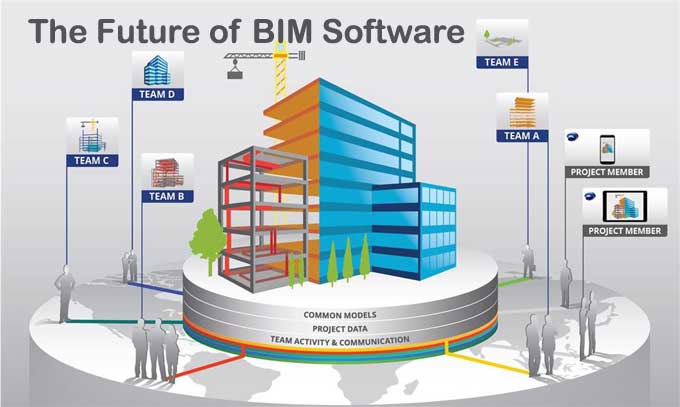How BIM Software will evolve in the Future
Tweet
The term BIM refers to software used by mainly architects for designing buildings. This software incorporates all aspects of a building's construction and maintenance into a virtual 3D model. It also includes information about building materials, cost estimates, and sustainability.
The collaborative capabilities of BIM enable it to be more valuable than if it were simply an advanced feature. This software lets you integrate all the necessary documents, blueprints, and schedules in one place and share them with the whole team. All those with access to the model will be updated whenever any changes are made to it.
The future of BIM
Architects, engineers, and builders around the world have already embraced BIM as the tool of choice.
Despite that, it probably happens in a few years, considering how fast technology develops. Despite the difficulty of predicting what will happen, current trends can give you a few ideas. Therefore, let's see where BIM may go in the future.
Using BIM after the design phase
In addition to being a design program, BIM goes beyond just that. As well as the construction and maintenance of buildings, this software can use. A BIM can prove incredibly useful throughout the whole building lifecycle because of the vast amounts of project information it contains.
BIM is still mostly used for design at this point, though. BIM is not a good tool for building maintenance or regular building operations, according to only 14% of building owners. Building companies don't use BIM much better either. Only 47 percent of them use it to accelerate project completion.
As more people become familiar with BIM, they will surely learn more about its capabilities.BIM expects to drastically change the way you design, build, manage, and maintain our buildings in the future.
Integration of BIM with other Software
Transcribing information from one software to another is one of the most tedious and time-consuming aspects of design and construction. It can take months to get rid of incompatible programs, which can cause you to lose important data.
Compatibility and collaboration will be top priorities in the future, thanks to technology. In the future, it will be easy to integrate with AR & VR, 3D printing, the Internet of Things, and even AI. All functions will automate, from design to maintenance.
Think about integrating BIM and AI, for instance. The program would handle all kinds of tasks automatically once you feed it a set of rules. You can stop manually printing, exporting, and updating files and models. Your BIM program can handle all of that on its own, even identifying when it needs to take extra steps.
You focus your energy on the most important aspects of the project instead of wasting time on trivial tasks. The integration of BIM with AR and VR will revolutionize the industry. It would be an exciting experience if you could touch and experience your creation instead of just seeing it on screen. So much easier it would be to spot issues and come up with better solutions.
Sustainable Building is the New Normal
The trend in construction is moving toward sustainability as a result of environmental concerns. Buildings need to be energy efficient and designed to integrate with nature.
Architects are tasked with creating such designs. The idea of sustainability isn't limited to the final product. It should be the same for the construction itself. Sustainability cannot enhance more effectively than with BIM.
Many benefits can derive from BIM. As part of the design phase, several experts, including engineers, contractors, and suppliers, give their advice on the project.
That will help them increase sustainability even before they begin to work on the project.
BIM can then facilitate collaboration once construction is underway. Thus, a sustainable building will have higher overall efficiency.
BIM plays a larger role in the more sustainable modern architecture and construction become. BIM will be necessary for every type of construction project in the distant future. Because of this, everyone in this field must have a basic understanding.
Wrapping it Up
As a construction movement, BIM comprises more than just software. You no longer discuss every aspect of the project on paper and have direct access to a wide range of information.
All team members must work as one to ensure seamless collaboration while increasing efficiency. Design, builder, and contractor lines are becoming less clear, and they should be completely gone soon.
BIM has already reached a lot of traction in the design industry, but it hasn't been fully utilized. Soon, construction will be completely different, and its time is yet to come. Until we know for sure how it will happen, it's hard to imagine what will happen.
To get online demonstration, watch the following video tutorial.
Video Source: Autodesk University

Gallery
Feel free to contact us for BIM requirements. One of our representative will respond you within 24 Hours. Send us your projects requirement today and grow your project.
Explore More !







